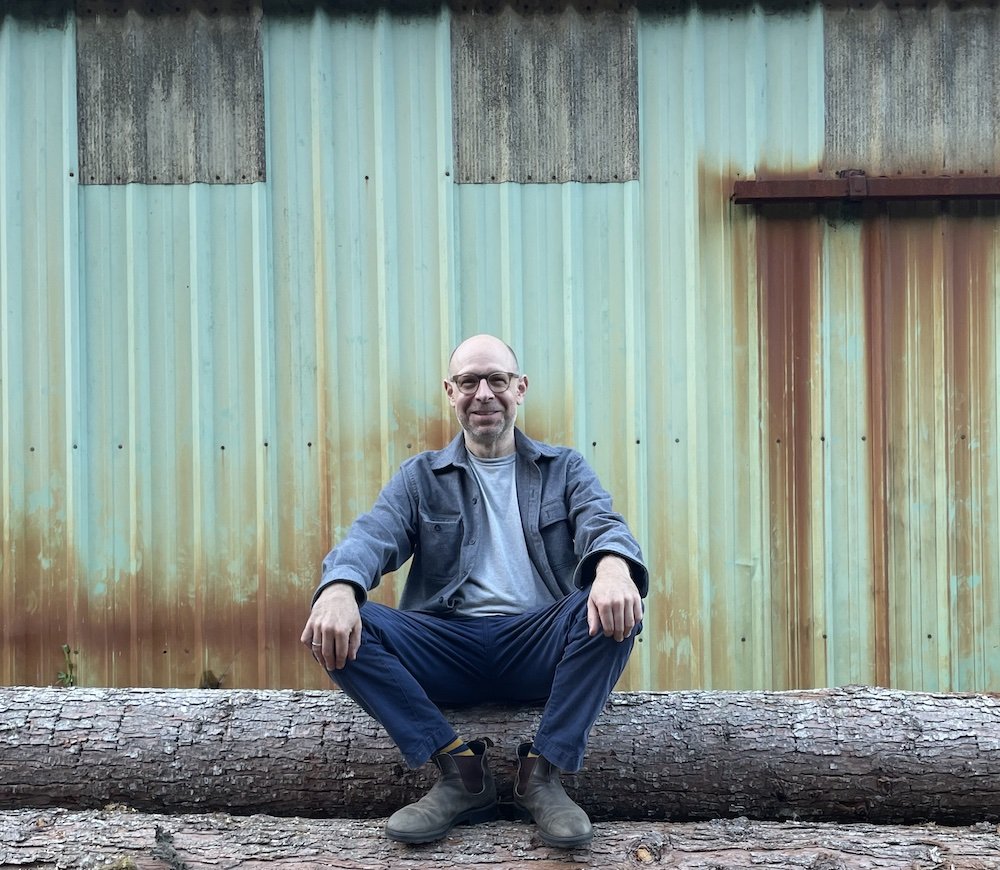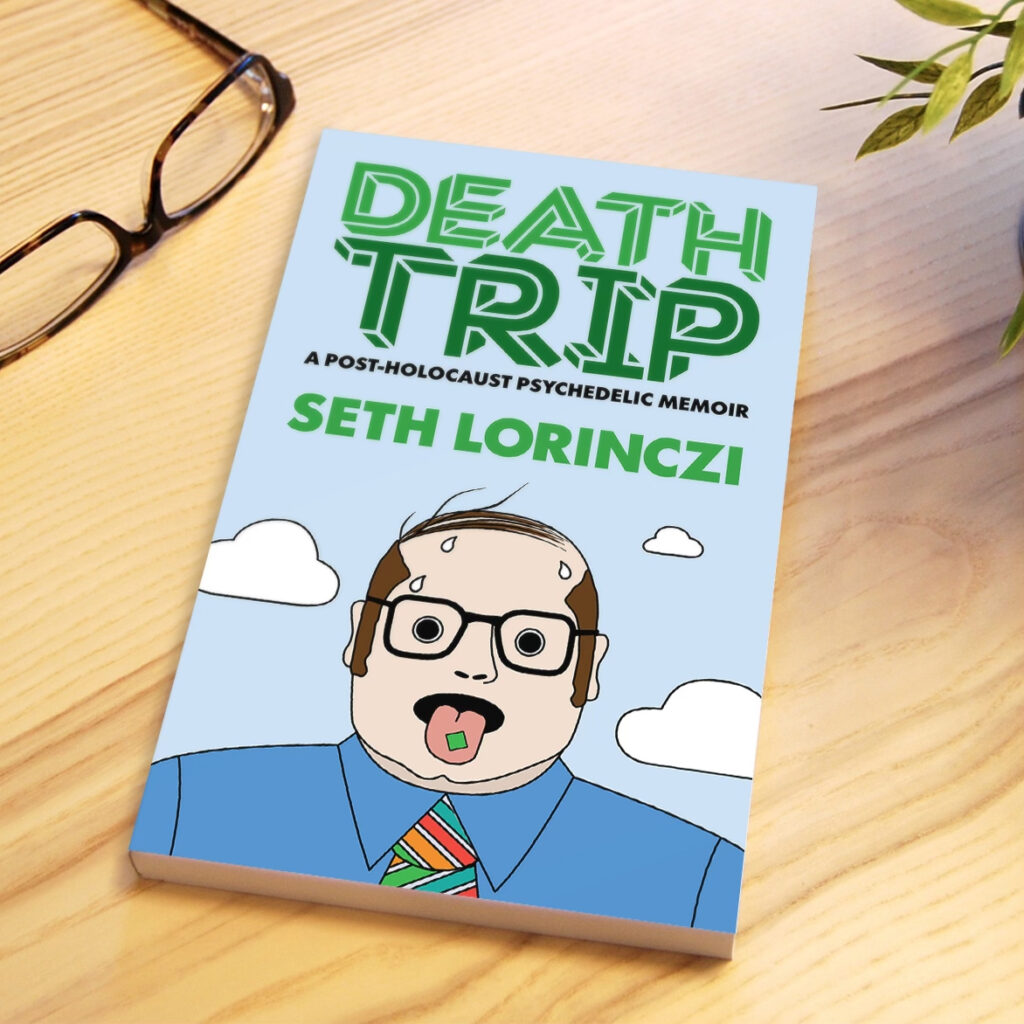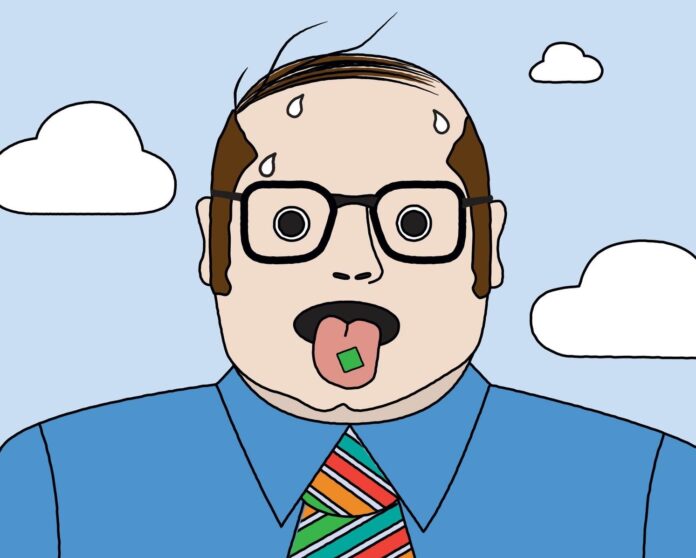>>We need your help! Become a 48hills member today so we can keep up our incredible local news + culture coverage. Just $20 a month helps sustain us. Join us here.
Despite the reticence of the California Legislature, which just let a popular bill to legalize psylocibin therapy die, there is growing mainstream momentum behind promoting the therapeutic effects of psychedelics, once buried by the onerous War on Drugs and the machinations of Big Pharma, who would rather keep you hooked on their addictive drugs than, say, chew a magic mushroom with your health care provider.
Once left to pie-eyed ravers, woo-woo hippies, and, of course, immensely knowledgeable Indigenous folks, employing psychedelics as a path to relieve psychological stress and inherited trauma is becoming as accepted as lighting up a pre-roll to unwind after work. “Microdosing” has entered the common lexicon via, of all things, the upper echelons of tech, grassroots psychedelics advocacy groups and intersectional communities are thriving, and therapists are developing professional practices that incorporate supervised usage and guided inner journeys with other techniques.
For Seth Lorinczi, a longtime music journalist and punk musician based in Portland, psychedelic therapy wasn’t even on the radar when he was confronting a midlife crisis that included a dead-end job and a crumbling marriage—and also traumatic revelations of his Hungarian-Jewish family’s tragic history with the Holocaust. But as he details in new book Death Trip: A Post-Holocaust Psychedelic Memoir (Spiral Path Collective), an open-minded therapist’s left-field suggestion that he try MDMA therapy unlocked a whole new chapter in his life, which led him from “the ayahuasca basements of Portland’s psychedelic underground to the darkest days of the Second World War.”
Lorinczi eventually found himself traveling halfway around the world to exhume his family ghosts and confront the legacy of antisemitic violence that shaped his own worldview in many unseen ways. It was a trip both physical and metaphysical—and his wrenching yet hilarious chronicle helps fill out the ways the psychedelics can be used for healing. Before his appearance, Wed/5 at 7pm, at Berkeley Alembic, I spoke with Lorinczi (who I’ve known for almost 30 years since working together at SF CitySearch, where he was a damn fine restaurant critic and food writer) and traced the Death Trip path.

48 HILLS Good lord, you had a lot going on at the pivotal time when you were recommended MDMA therapy: Midlife crisis, marriage trouble, generational trauma, and that’s not even mentioning the ever-looming shadow of the Holocaust. Can you briefly describe where your head was at this moment?
SETH LORINCZI Ha! Exploded, mostly. In retrospect, what was most challenging was that I could barely admit to myself how wrong everything was. I’d allowed myself to become completely isolated from my friends and my community, and worst of all from my wife and my young daughter. I thought if I just worked harder at a job I was patently unsuited for—scoring commercials and short films—everything would somehow magically get better. What I was really doing was following the messages encoded by my father, a striving immigrant and Holocaust survivor who buried his unexamined trauma in work.
I just want to point out the incredible good fortune of connecting—totally unbeknownst to my wife and I!—with a therapist versed in MDMA therapy. I literally believe it saved me; it certainly saved our marriage. That’s a “shadow mission” of this book, or maybe a not-so-shadow one. There’s such massive interest in this work and I see my role as being a translator. Meaning: someone who didn’t come from the underground feathers-and-beads world, and who’s also not completely on-board with the white lab coat, “take this pill and you’ll feel better” model either. I was a more-or-less “normal” person who fell into this world, saw that a lot of people were having truly transformative experiences, and then came back to write about it.
48 HILLS You’ve been a prominent musician and journalist on the punk scene—I realize your main beat, Dischord Records and the DC punk scene of the 1980s and ’90s, was a beacon of the straight-edge, anti-drug scene, but what was your own experience with “illicit” substances before the therapy was suggested?
SETH LORINCZI Well, I would push back on the “prominent” part! Though it’s interesting that the scene I was so involved in is garnering so much attention right now. Maybe I just lived long enough for it to come back around?
I’ll say this: I was introduced to cannabis way too young by a relative with poor judgement and bad boundaries; after that I was on the hunt for anything that would take me out of “here”—that is, the everyday, 3-D world that on its face seemed so senseless and chaotic. I took a lot of LSD as a teenager, and I was probably high every single day of my eighteenth year, and many other times as well.
But here’s the thing: Even though I was only trying to escape, I couldn’t help but learn from those experiences. They prompted some true revelations, and sparked some hard but necessary conversations with my parents. But in the years since, I’d more or less forgotten about them, thinking that was more or less “kids stuff,” that it was time to buckle down and get serious. As millions of us are finding, those psychedelic experiences aren’t just wild visions and trippy visuals. They’re among the most durable and meaningful moments of our lives, and for those who suffer from PTSD or face life-changing or life-ending diagnoses, they’re helping to profoundly rewrite life stories for the better.
48 HILLS How did you react to the MDMA suggestion, and how did it lead you to other psychedelics?
SETH LORINCZI I was surprised. Like, hugely. I wasn’t aware that was a service our therapist offered, or that it was even legal (it wasn’t). Fortunately, my wife was all in. She saw the promise before I did and after that first session—there were three, as per MAPS protocol—everything changed in a major way.
Those MDMA sessions left me really cracked open. Suddenly everything I thought I’d known about my life was up for grabs. What I didn’t know was that the medicine (no one in this world calls it a “drug”) opens up what’s called a “critical window,” in which we have a chance to revisit and reenact early life lessons—like the advantages of forming strong social and family bonds. It really is a kind of “second chance,” and I can’t stress how potentially profound it can be.
But the therapist sensed that we wanted to go deeper—again, my wife really led the charge here. It took many months, but eventually the therapist connected us with a trustworthy ayahuasca circle. I had the barest inklings that maybe the experiences of my ancestors—the Holocaust survivors who’d raised me—might be directing my actions in ways of which I was unaware.
Look, I wouldn’t have chosen ayahuasca—or even MDMA—but that’s just the door that opened. And as it turned out, ayahuasca was the perfect way to explore these stories. And eventually, the path would lead all the way back to Budapest, to go and try to learn the truth for myself.
48 HILLS You were a co-founder of an event called “Judaism & Psychedelic Resistance.” Have psychedelics and Jewish history been intertwined?
SETH LORINCZI Yes! To a fairly large degree, actually. Both today—Israel is a leader in terms of psychedelic research—and historically. I’m thinking of people like Ram Dass / Richard Alpert here. And there’s strong forensic evidence that cannabis was a ritual substance in ancient Jewish rites. I’m about the least Jewish Jew you could find, but it’s my take that there’s a questing and questioning nature to Jewish scripture and psychedelics that go hand in hand.
48 HILLS How does the Holocaust tie into this? I know the psychedelics are just one part of this incredible story of tracing your family past.
SETH LORINCZI You had to go dark, didn’t you? Yes, as I traced my family story back in time, I recognized that their lives had intersected with some of the most awful moments in modern history.
As I learned more about the specifics of the Holocaust in Hungary—and it was very different in every territory and population it touched—I realized that it wasn’t as if the Germans showed up one day and suddenly things got rough for the Jews. Jews were actually fairly well integrated into Hungarian society—Budapest was roughly a quarter Jewish in the early part of the 20th century. But something curdled after the end of the First World War. And instead of the end of fighting bringing peace and stability, it opened up an era of regional conflict, starvation, the influenza pandemic, mass government-sanctioned violence, and more.
This was the backdrop against which my grandparents became adults, and into which my father was born. And as I realized how completely this had colored their experiences—and how thoroughly they’d tried to shield me from knowing it—I knew I had to go in search of answers. And, of course, eventually I did. Let’s just say that in Budapest, I learned far, far more than I ever imagined possible.

48 HILLS I don’t want to spoil the journey you take in the book any more that I have with these questions, but choosing to write about it all must have been a big step. What are your hopes about sharing this story?
SETH LORINCZI No, I appreciate that so much! Honestly, I was reluctant to make this book about myself; I thought it was about psychedelics, or my ancestors. But time and time again, my writing partners—I have a phenomenal writing group—pointed me back to the truth: That this had to be about my journey. Now that it’s finally out, it’s incredibly gratifying to read all the notes coming in, many from people I’ve never met, telling me that they see themselves in this book.
So, to actually answer your question: I’d like the book to be a sort of “case study” demonstrating what this work can do, how transformative it can be, and how embracing the fears and repressed emotions we so often push away is actually a portal into far greater connectedness and hope. Because that’s something we all desperately need right now. More than ever.
And that all said, I guarantee there’s nothing the least bit preachy in the book. It’s just a bonkers story—one of the blurbs I’m proudest of reads, in part: “…as gripping and propulsive as a crime novel.” That’s what I was going for, and apparently I succeeded.
DEATH TRIP is available everywhere books are sold, in hard copy and eBook. Though the best place to buy it is direct through the publisher, Spiral Path Collective. Author Seth Lorinczi will appear at Wed/5 at 7pm at Berkeley Alembic, more info here.





